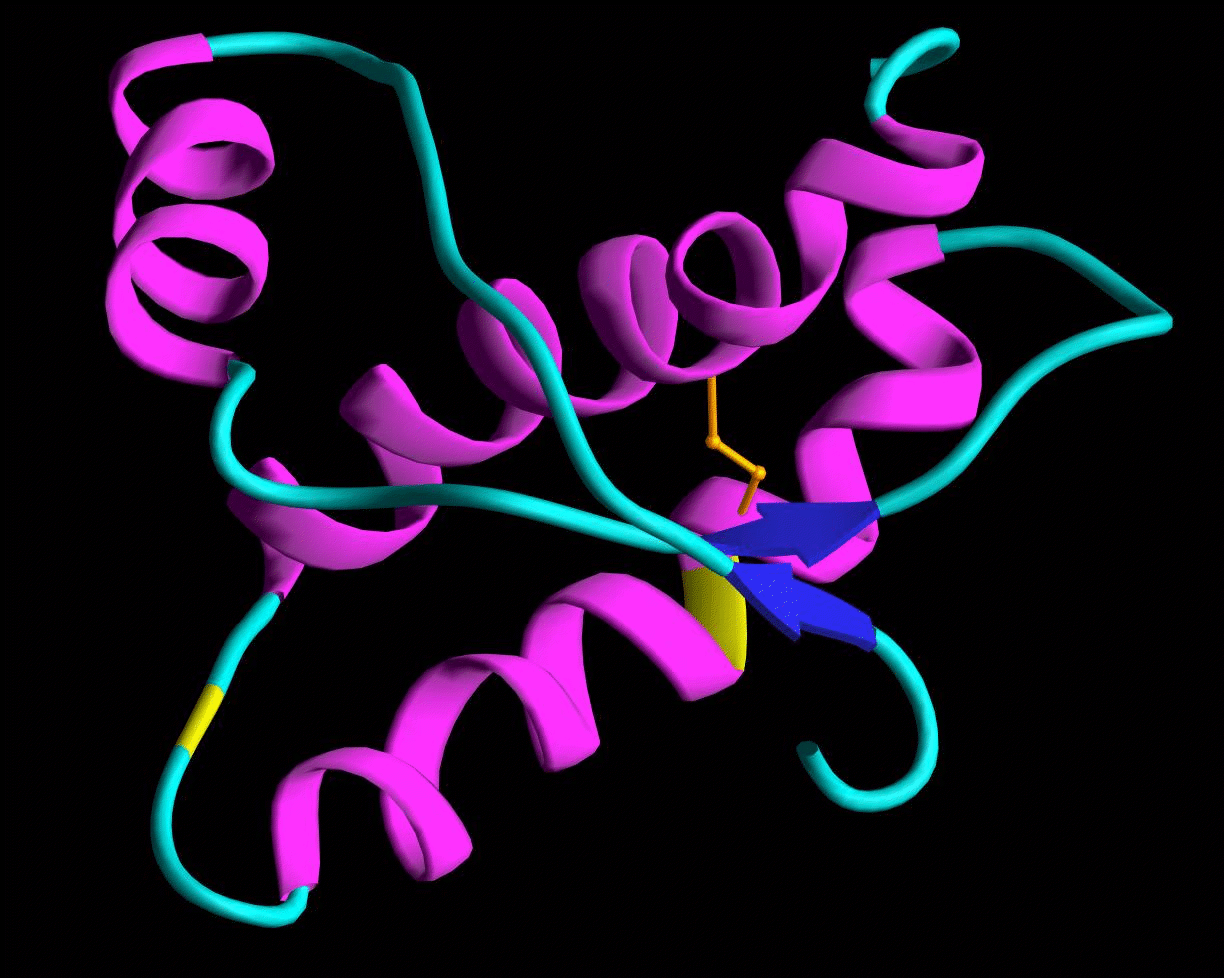
Prions are infectious protein particles that cause a number of neurological disorders, for example Scrapie in sheep and goats, Creutzfeldt-Jakob disease in humans and the infamous "mad cow disease" in cattle. The infectious particles are a refolded form of a normal protein found associated with nerve cell membranes. The prions seem to lead to neural dysfunction by interacting with the normal proteins and causing them to refold into the abnormal configuration, which converts the primarily alpha structure seen below into a form with more beta sheet.
For more information on Prions, see The Official Mad Cow Disease Home Page.
Human Prion Protein Precursor
Signal Sequence
Octapeptide Repeat Region
Conserved Hydrophobic Region
(Alpha Helix)
[Beta Strand]
Cysteines of disulfide linkage enlarged and underlined (C)MANLGCWMLVLFVATWSDLGLC
KKRPKPGGWNTGGSRYPGQGSPGGNRYP
PQGGGGWGQ PHGGGWGQ PHGGGWGQ PHGGGWGQ PHGGGWGQ
GGGTHSQWNKPSKPKTNMKHM
AGAAAAGAVVGGLGGY
[MLGSAM]
SRPIIHFGS
(DYEDRYYRENMHRY)
P
[NQVYYRP]
MDEYSNQ
(NNFVHDCVNITIKQHTVTTT)
TKGENFT
(ETDVKMMERVVEQMCITQYERESQAYYQ)
RGSSMVLFSSPPVILLISFLIFLIVG
Folding pattern from Prusiner, Prion diseases and the BSE crisis.
Science 1997 October 10: 278: 245-251Link to the Music: Prion
Notes on the Music:
In this piece the amino acids glycine (G), tryptophan (W), glutamine (Q), proline (P) and histidine (H) that repeat in the second line of the sequence above are used throughout as a base line in set in low strings and percussion. The protein sequence plays through twice -- the first time with unison winds and strings representing the hydrophilic and hydrophobic residues respectively. On the second playthrough a second voice is added, offset from the first to produce a harmonic line whose occasional dissonances represent the destructive interaction between the abnormal and normal versions of the protein. The neurological consequences of this interaction are represented by clashing sounds from various percussion instruments. At the end, the upper voices of the sequence begin again at a slower tempo and end the piece with the repetitive PHGGGWGQ motif.